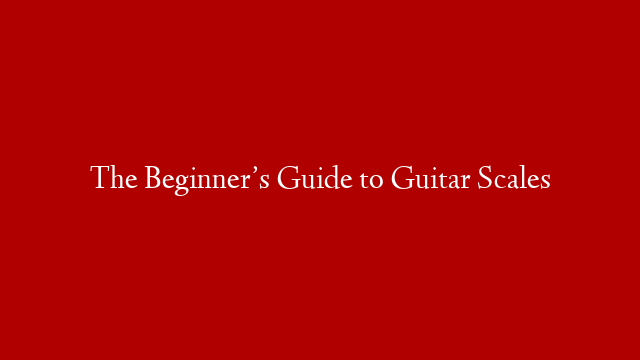Many people initially find the prospect of learning guitar scales as tedious or even unnecessary. But they’re wrong in both counts. The mastery of guitar scales of is one of the most essential skills you need to develop if you want to improve as a guitarist. And once you’ve gotten the hang of it, you can actually find the study of guitar scales quite addictive. By simply mastering a particular scale, you find yourself playing certain chords more easily, your fingers are moving more quickly and overall, you’re playing with greater confidence and finesse. You get all that just by mastering guitar scales.
Elements of Music
When mastering guitar scales, remember that all lessons would still have to adhere to the fundamental elements of music. Simply put, memorizing the notes that make up a particular scale is not enough to turn you into an excellent guitarist. You should still be able to play the notes according to the tempo required for the piece and so forth. In particular, be sure to take note of the basic elements of music.
Rhythm
This refers to the timing required by the piece. It tells you how long a particular note would last.
Melody
It’s also known as the tune of the song you’re playing. It defines and distinguishes the song. Melodies are different from chords because they don’t require you to play a group of notes at the same time.
Harmony
Chords as well as chord progressions are the most common examples of harmony. You play a group of notes at the same time and it produces a harmonized sound. If it produces a discordant sound then you’ve probably hit a wrong note or two.
Using Your Senses
Obviously, your auditory sense is the most heavily used sense when you’re learning to play the guitar. There are even exercises purely designed to train your ears to detect which note is being played and find out if a wrong note is plucked when playing a certain chord. But your ears shouldn’t be the only ones working.
Eyes
It’s critical to practice eye-to-hand coordination. You should learn how to read music sheets or guitar tabs and play as you read them. This, however, will require constant practice. Start by mastering one section. It’s okay to take as much time as you need for your fingers to look for the right frets and strings without looking at it. Keep your eyes trained on the sheet. Do this continuously and before you know it, you’re reading and playing at the same time.
This way, your ears and eyes will help you master guitar scales without making a conscious effort to do so.



